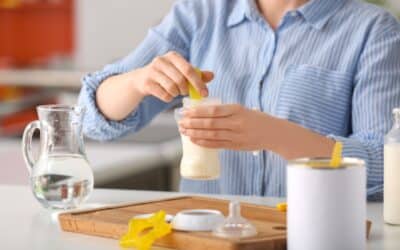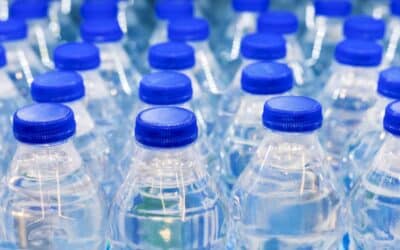When it comes to caring for our precious little ones, every detail matters, and one of those crucial areas is hydration. Providing clean, safe water for your baby is not just a matter of quenching their thirst. It’s a key part of their health and development. Hence, it’s vital to be informed about the necessary precautions and methods to ensure optimal hydration practices for your baby.
This comprehensive guide focuses on all you need to know related to baby water care, from explaining the right way to sanitize water sources and storage containers to understanding the importance of using boiled or purified water for baby consumption. Additionally, we offer tips for avoiding contaminated water, maintaining the right water temperature, ensuring hygiene during feeding, managing on-the-go hydration, to eventually building healthy water habits – this blog post covers it all.
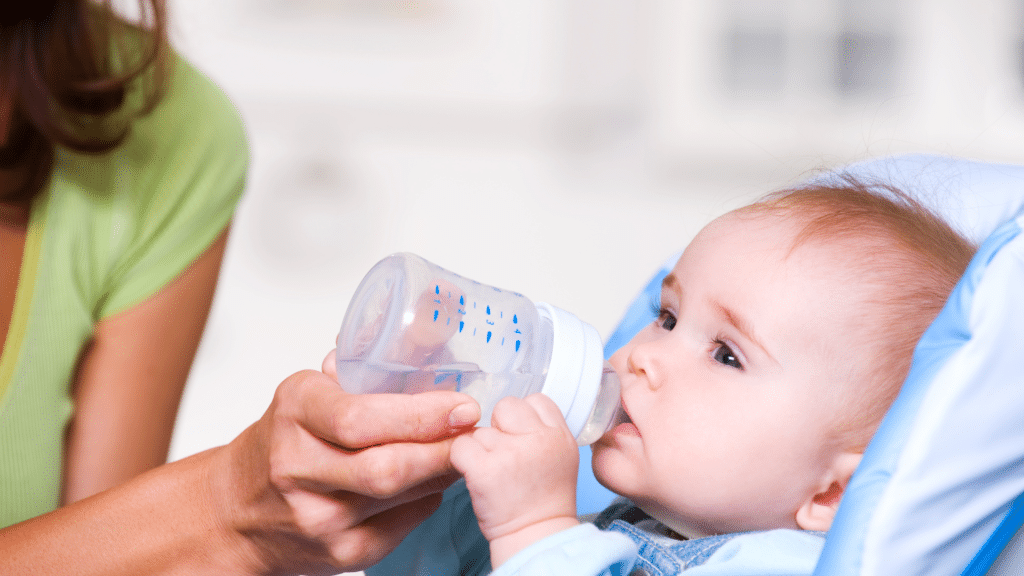
Sanitizing Water Sources and Containers
Keeping our water sources clean is crucial to ensure we remain healthy. It is particularly significant when considering baby consumption, as their developing immune system may find it harder to fight off bacteria and viruses. This practice also helps your baby’s body stay hydrated and helps maintain body temperature, especially during hot weather.
Here we provide a step-by-step guide on how to properly clean and sanitize water storage containers and how to use boiled or purified water for baby consumption.
Step-by-step Guide to Cleaning and Sanitizing Water Storage Containers
Follow these steps to ensure that your water storage containers are thoroughly clean and safe for babies, especially for those under 12 months of age.
- Empty the Water Storage: Discard or use any remaining water in the container before the cleaning process begins.
- Clean with Soap: Using dish soap and warm water, scrub the interior and exterior of the container. For better results, use a bottle brush to reach into corners.
- Rinse Thoroughly: Rinse the container with clean water, ensuring all the soap is washed off.
- Sanitize: To sanitize, you can use a solution of 1 tablespoon of unscented chlorine bleach to a gallon of water. Fill the container with this solution and let it sit for a few minutes.
- Rinse Again: Rinse the container again with clean water before letting it air dry.
Using Boiled or Purified Water for Baby Consumption
Babies have a developing immune system that doesn’t have the ability to fight off certain bacteria, viruses, and parasites that adults can. Therefore, it is essential to use boiled or purified water for baby consumption.
Boiling Water: To boil water, fill a pot with water and bring it to a rolling boil. Let it boil for at least one minute. Let it then cool naturally and store it in a clean, sanitized container. Use this water to dilute infant formula or for the baby to drink.
Purifying Water: There are various methods for purifying water. You can use commercial purifiers and filters, ultraviolet (UV) light units, or water treatment drops or tablets. Always follow the manufacturer’s instructions for these methods.
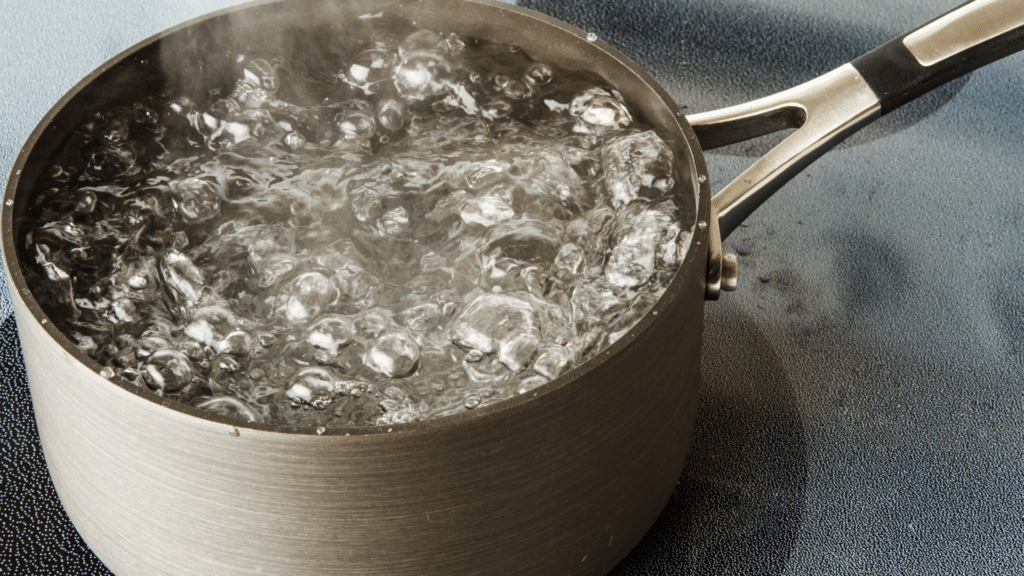
Avoiding Contaminated Water
Water contamination can cause a host of health problems, especially in babies whose immune systems are still developing. Therefore, it’s critical to identify potential sources of contamination and select suitable water sources for your baby.
Potential Sources of Water Contamination
Contamination can occur anytime, from the time water is sourced to when it is consumed. Here are some potential contaminants to be aware of:
- Microorganisms: These include bacteria, viruses, and parasites that may lead to illnesses.
- Heavy Metals: High levels of metals like lead, arsenic, and mercury can be harmful.
- Chemicals: These could come from industrial waste, pesticides, and fertilizers.
- Radiological Contaminants: Radioactive substances which cause various health issues.
Sources that often carry these contaminants include:
- Lead pipes or public water supplies that haven’t been adequately treated.
- Underground sources, such as wells, particularly when they’re located close to waste disposal sites.
- Surface water from rivers, lakes, and reservoirs that are exposed to pollutants.
Tips for Selecting the Right Water Sources for Your Baby
When it comes to choosing safe water sources for your baby, follow these tips:
- Public Water Supplies: These are usually the safest, as they’re often treated to reduce contamination. However, it’s essential to stay updated on your local water quality reports.
- Bottled Water: This can be a safer choice, especially for newborns or when you’re traveling.
- Filtered Water: High-quality water filters can remove most contaminants. Ensure the filter is certified to remove particles of specific sizes.
- Boiled Water: Boiling water is an excellent way to kill microorganisms, especially when preparing baby formula.
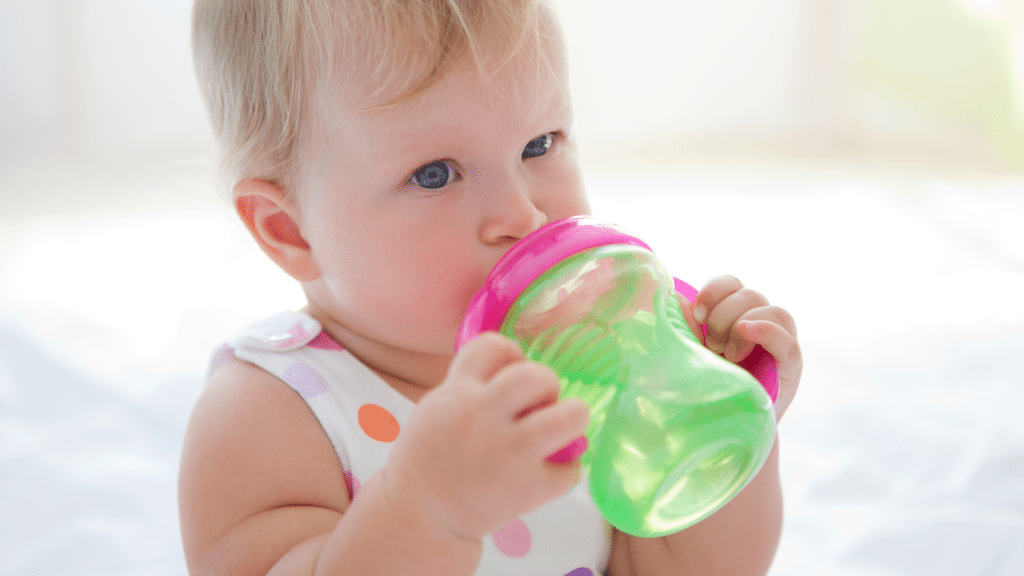
Temperature Considerations
The temperature of the water you give to your baby plays a significant role in their comfort and safety. The correct temperature can prevent scalding and enhance comfort during consumption and bathing. In this section, we’ll discuss the ideal temperature of water for babies and tips for safely warming or cooling water.
The Ideal Temperature of Water for Babies
- Drinking Water: Firstly, ensure that the water source is safe for baby consumption. Babies should drink lukewarm or room-temperature water. Avoid giving babies very cold or hot water as it might upset their stomachs or harm them.
- Formula Preparation: Boil the water and let it cool down for no more than 30 minutes to around 70°C (158°F) before mixing your baby’s formula. This temperature ensures that the formula powder will dissolve properly and it’s not too hot or cold for your baby.
- Bathing Water: The ideal bathwater temperature for newborns and infants should be around 37°C (98.6°F) to 38°C (100.4°F). A safe temperature minimizes the risk of scalding and ensures a comfortable bath time.
Safely Warming or Cooling Water for Your Baby’s Comfort
Use these methods to warm or cool water safely and efficiently:
Warming Water:
- For drinking or formula preparation, place your baby’s bottle in a bowl of warm water for a few minutes until it reaches the desired temperature.
- Alternatively, use a bottle warmer, which is designed to heat bottles to a safe and precise temperature.
- Never use a microwave to heat water for babies, as it results in an uneven temperature and might cause hot spots that could scald your baby.
Cooling Water:
- For drinking, store the boiled water in a cool, safe place (like a refrigerator), but ensure to offer it within 24 hours of boiling.
- For formula preparation or bathing, allow hot water to cool down naturally at room temperature or add cold water until the desired temperature is reached. Always mix the water thoroughly and test the temperature before using it for your baby.
By adhering to these temperature considerations, you can provide the greatest level of comfort and safety to your baby while ensuring proper hydration and hygiene.

Hygiene During Feeding
Ensuring good hygiene during feeding is essential for your baby’s health and well-being. Maintaining proper hand and environmental cleanliness can drastically minimize the risk of waterborne and foodborne illnesses.
Importance of Hand Hygiene Before Preparing Bottles or Feeding
Hand hygiene plays a critical role in maintaining a safe feeding environment. Always wash your hands thoroughly to prevent the transfer of bacteria or viruses to the baby through bottles or during direct feeding.
- Before Preparing Bottles: Wash your hands with warm water and soap for at least 20 seconds before handling bottles and formula. Water used for making baby formulas should be sterile, especially before the baby’s immune system has matured (around the age of 6 months).
- Before Feeding the Baby: Every feeding provides another exposure to bacteria and viruses. As such, ensure that your hands are clean and the feeding area is sanitized before sitting down to feed your baby.
Maintaining a Clean Feeding Environment to Prevent Waterborne Illnesses
The safety of the feeding environment is just as important as the hygiene of the actual food and water consumed.
- Clean and Sanitize Utensils and Surfaces: Regularly clean and sanitize all feeding utensils. Sterilize bottles and nipples by boiling for 5-10 minutes or using a bottle sterilizer. Also, keep countertops, tables, or any other surface you use for preparing your baby’s formula clean.
- Store Properly: Store leftovers properly. Milk or formula that your baby didn’t finish should be discarded—don’t save it for the next meal. Prepared bottles of formula should be stored in the fridge and used within 24 hours.
- Pay Attention to Your Baby’s Responsive Signals: Babies often know when they have had enough to eat. Pay attention to your baby’s signals, and stop feeding when your baby indicates they are full.
Practicing hygiene during feeding is an ongoing process that safeguards your baby’s health, protecting them from a variety of potential illnesses and promoting a comfortable and enjoyable feeding experience.

Building Healthy Water Habits
Healthy water habits are vital for babies as they start developing a routine and learning independence. Regular and safe hydration promotes overall health and ensures your baby is well-equipped to engage in daily activities.
Routines that Promote Adequate Hydration
Consistent routines can help ensure that your baby gets enough water throughout the day. Therefore, you should:
- Time Hydration Properly: Time water drinks around meal times, in-between meals, and during snack time. Be aware that while it’s essential to keep your baby hydrated, it’s not recommended to give water to babies under six months without discussing it with a pediatrician, as their primary source of hydration should be breast milk or formula.
- Monitor Hydration Levels: Check your baby’s hydration status regularly. Signs of good hydration include producing at least six wet diapers a day, having regular bowel movements, and active behavior.
- Make Hydration Fun: Use bright-colored cups or bottles to make drinking water more engaging as they grow older.
Teaching Older Infants and Toddlers to Drink Water Independently
As your baby grows and starts exploring the world, it is crucial to facilitate their independence, including drinking water on their own. Here’s how you could inculcate this habit:
- Introduce a Sippy Cup: After the baby is six months old and starting to eat solid foods, you can introduce a Sippy cup for water. Start by letting them hold the cup while you guide it to their mouth.
- Positive Reinforcement: Use positive reinforcement when your child drinks from the cup independently. This could be clapping, smiling, and verbal appreciation.
- Lead by Example: Children often imitate those around them. Let them see you regularly reaching for your water bottle, reminding them to drink water without specifically telling them to do so.
Remember, water alone isn’t sufficient to meet a young child’s nutritional needs. Babies below six months should primarily be fed breastmilk or formula, and even when eating solid foods, child drink should be limited to water, diluted fruit juice, and appropriate milk (avoid cow’s milk until they’re around one year old). Always ensure you monitor your baby’s water intake and avoid sugary drinks. Indicators like fewer wet diapers can alert you if the baby isn’t getting enough fluids. For young children ages 1-3 years old, fruit drinks should ideally be avoided or limited due to the sugar content in many fruit juices.
By instilling good water habits at a young age, you’re setting your child up for a lifetime of healthy hydration. It’s a way to support their ever-changing and growing bodies, minds, and skills.

Conclusion
In conclusion, providing safe and clean water for your baby is a key part of supporting their health and development. By taking the time to understand the protocols for cleaning and sanitizing water storage containers, as well as boiling or purifying water for consumption, you can ensure your baby is consuming safe, clean water.
As your child grows, teaching them safe and healthy water habits is an invaluable life skill. Although it may seem challenging at first, consistently maintaining these measures will become a natural part of your parenting duties.
Finally, always consult with your baby’s pediatrician for personalized guidance. This guidance not only empowers you to nurture your baby’s health but also fosters a safe, soothing environment for them to grow and thrive. Here’s to joyful, healthy hydration for your baby, one sip at a time.
Did this article help? Please let us know in the comments. If you have any questions, please ask us below!

